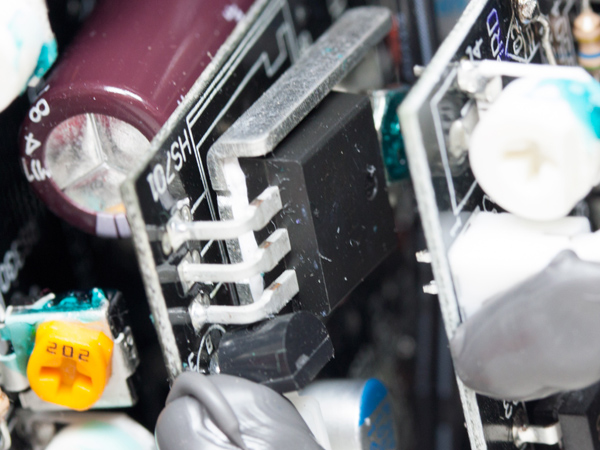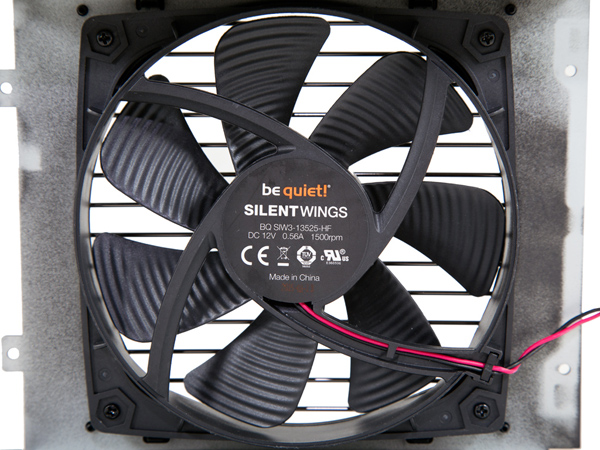be quiet! Dark Power Pro 11 850W Power Supply Review
Why you can trust Tom's Hardware
A Look Inside And Component Analysis
Our main tools for disassembling PSUs are a Thermaltronics soldering and rework station and a Hakko 808 desoldering gun.
| Primary Side | |
|---|---|
| OEM | FSP Technology, Inc. |
| Transient Filter | 4x Y caps, 2x X caps, 1x CM chokes, 1x MOV |
| Inrush Protection | NTC Thermistor & Relay |
| Bridge Rectifier(s) | 2x Shindengen LL15XB60 (600V, 15A @ 124 °C) |
| APFC MOSFETs | 2x Infineon IPA60R165CP (650V, 13A @ 100 °C, 0.165 Ohm) |
| APFC Boost Diode | 1x CREE C3D06060G (600V, 6A @ 155 °C) |
| Hold-up Cap(s) | 2x United Chemi-Con (420V, 470uF each or 940uF each, 2000h @ 105 °C, KMQ) |
| Main Switchers | 4x STMicroelectronics STP22NM60N (650V, 10A @ 100 °C, 0.22 Ohm) |
| Driver IC(Main Switchers) | 2x Silicon Labs Si8233BD-C-IS |
| APFC Controller | Infineon ICE2PCS02 |
| Switching Controller | Champion CM6901 |
| Topology | Primary side: Full-Bridge & LLC Resonant ConverterSecondary side: Synchronous Rectification & DC-DC converters |
| Secondary Side | |
| +12V MOSFETs | 4x MOSFETs |
| 5V & 3.3V | DC-DC Converters: 2x MOSFETs1x APW7159 PWM Controller |
| Filtering Capacitors | Electrolytics: Nippon Chemi-Con (105°C, KZH), Rubycon (105 °C)Polymers: Nippon Chemi-Con |
| Supervisor IC | SITI PS232S (OVP, UVP, OCP, SCP, OTP) |
| Fan Model | be quiet! SilentWings 3, SIW3-13525-HF(135mm, 12V, 0.56A, 70.12 CFM, 1500 RPM) |
| 5VSB Circuit | |
| Rectifying MOSFET | 1x International Rectifier RFR1018E(60V, 56A @ 100 °C, 0.0071 Ohm) |
| Standby PWM Controller | Power Integrations TNY279PN |
Parts Description
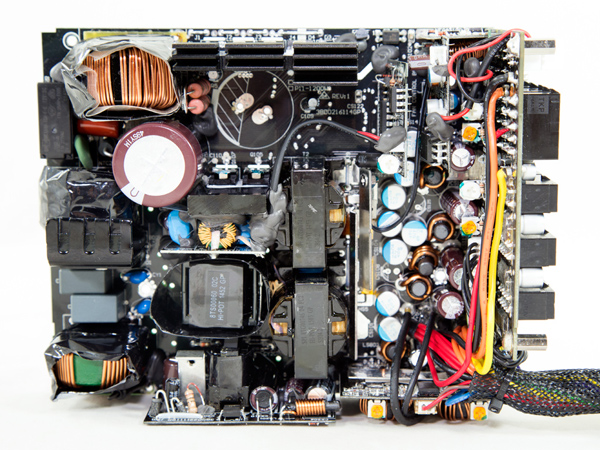
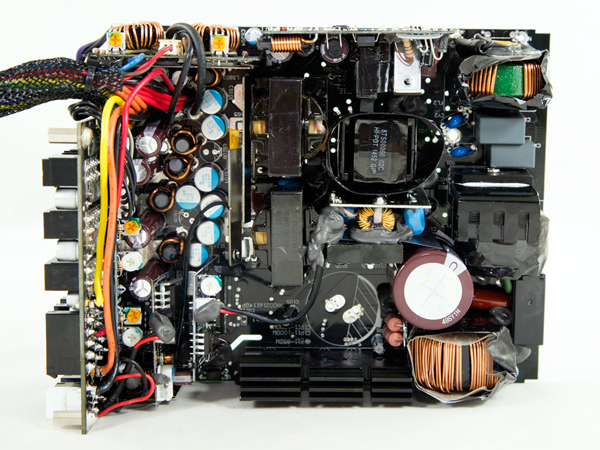
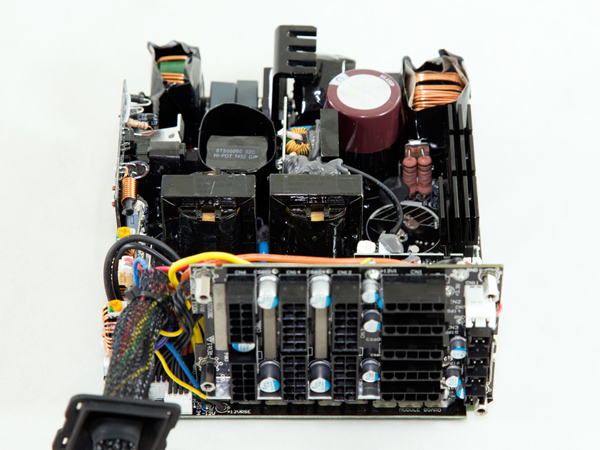
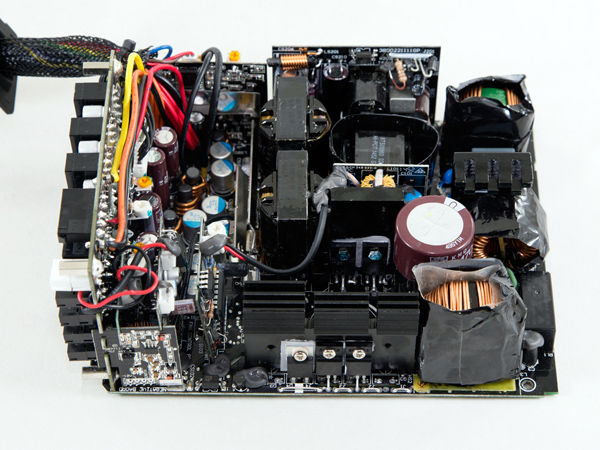
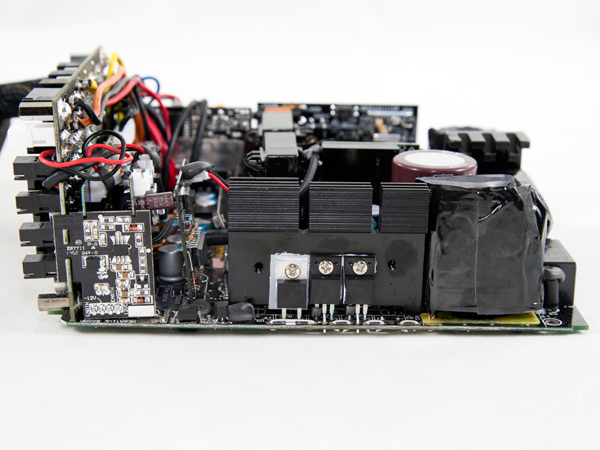

Taking apart this PSU wasn't easy since be quiet! (or FSP, really) used too many screws to hold it together. On top of that, we had to carefully remove the rubber edges so that we wouldn't damage them or the PSU finish. The design is modern, although no digital circuits were used. On the primary side is a full-bridge topology and an LLC resonant converter, while on the secondary side, DC-DC converters generate the minor rails and a synchronous design handles the +12V rail. Based on a quick look, the quality of the internals appears to be high, especially since only Japanese caps were used.
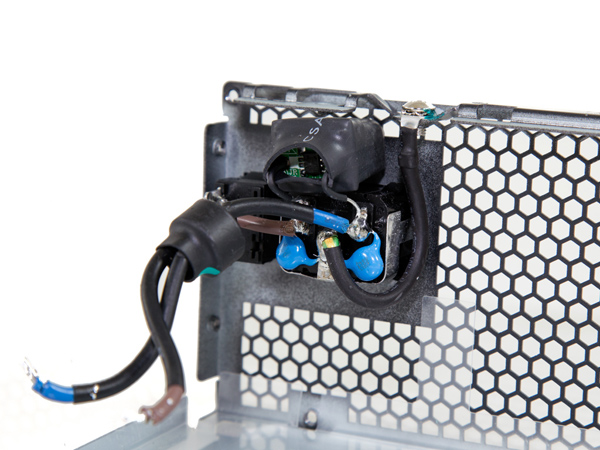
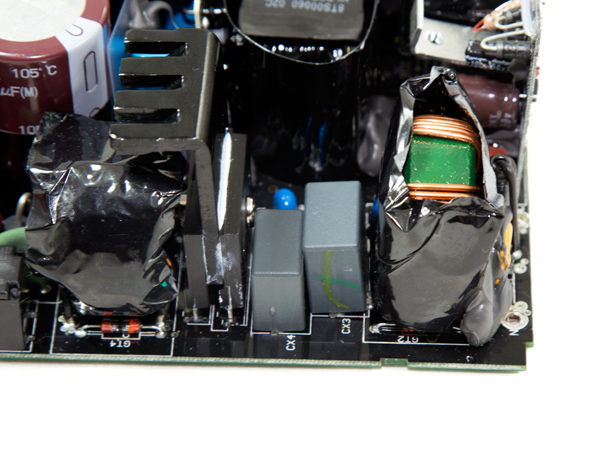
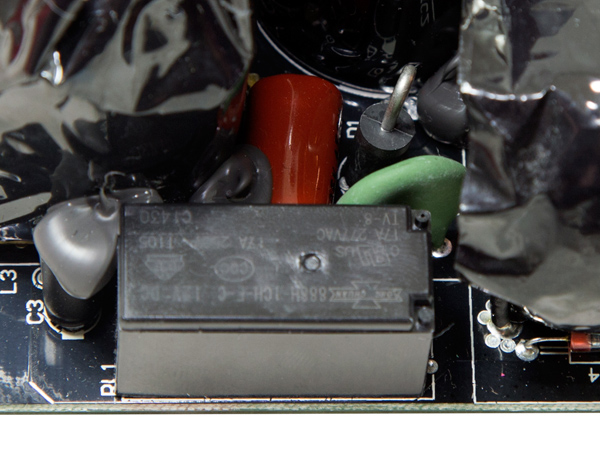

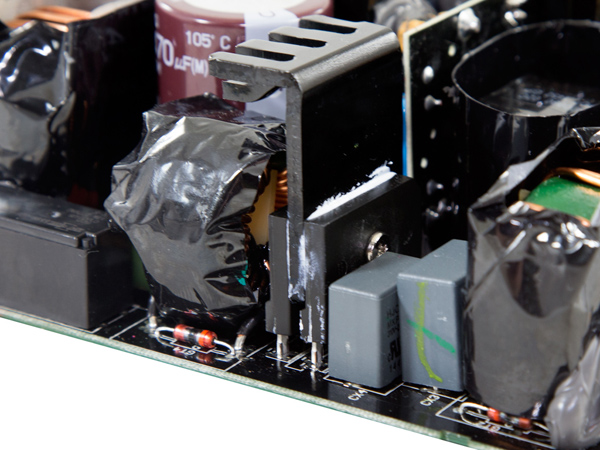
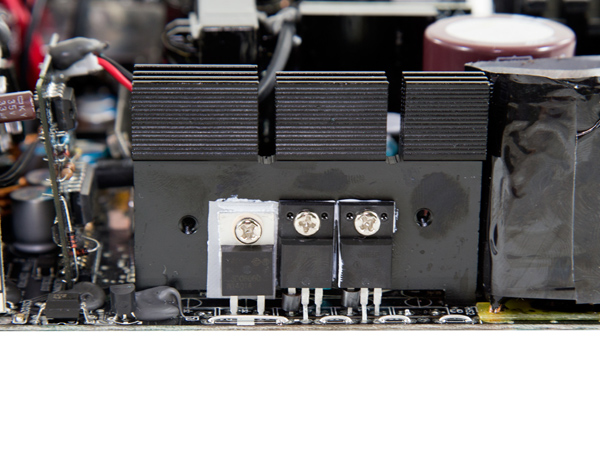
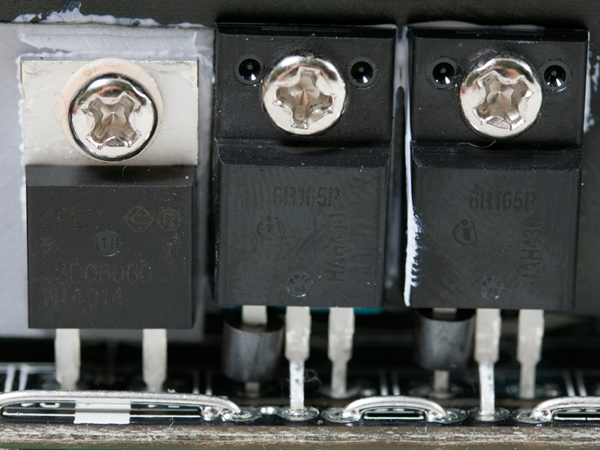



The first part of the transient filter stage hosts only two Y caps, while the second part, located on the main PCB, includes two more Y caps, two X caps, a CM choke and an MOV. We would like to see another CM choke here. There is also an NTC thermistor for protection against large inrush currents, and it's supported by a relay in order to cool down fast.
The two bridge rectifiers are provided by Shindengen, model number LL15XB60. Combined, they can handle up to 30A of current, so they are overkill for this PSU.
The APFC converter uses two Infineon IPA60R165CP MOSFETs along with a single CREE C3D06060G boost diode. There are two Nippon Chemi-Con bulk caps (420V, 470uF each or 940uF each; 2000h at 105 degrees C; KMQ). The APFC controller is an Infineon ICE2PCS02 IC, which is installed on the solder side of the main PCB.
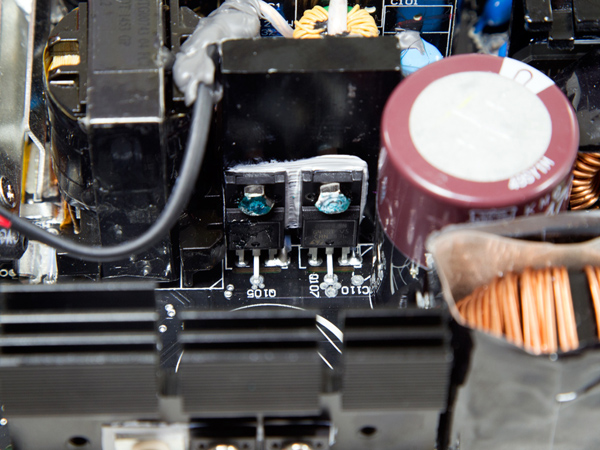

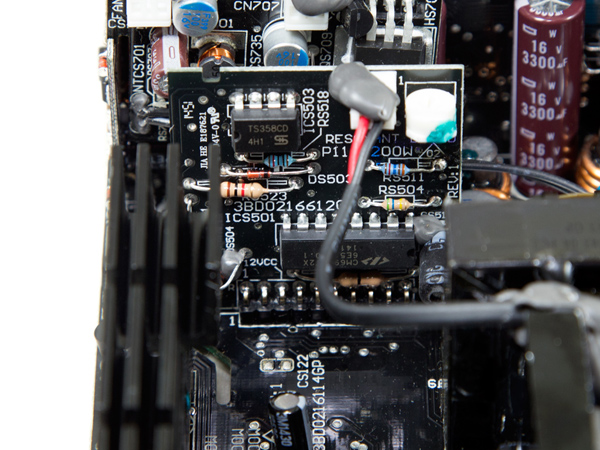


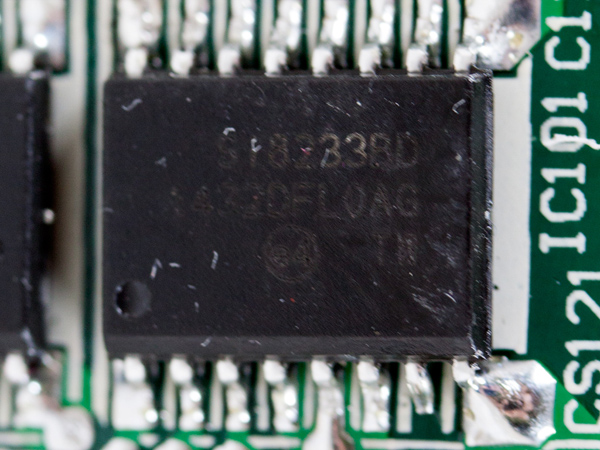
The main switchers, four STMicroelectronics STP22NM60N, are arranged into a full-bridge topology. Their controller, which also controls the FETs that regulate the +12V rail on the secondary side, is a Champion CM6901. On the same board with the aforementioned controller, we also found a TS358CD operational amplifier (op-amp). In addition, the driver ICs of the aforementioned FETs are two Silicon Labs Si8233BD-C-IS, which support switching frequencies of up to 8MHz. Finally, an LLC resonant converter further increases efficiency by restricting switching energy losses.
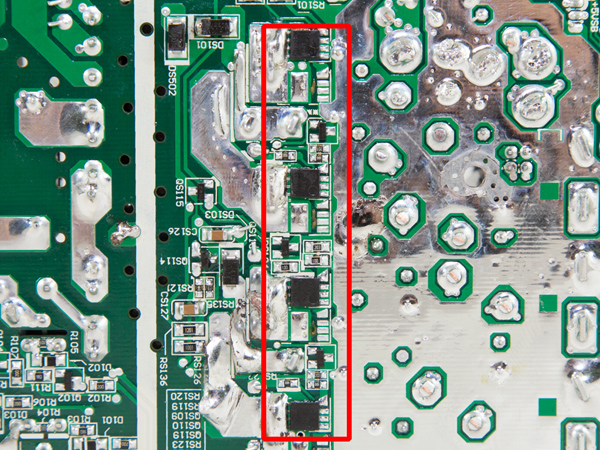
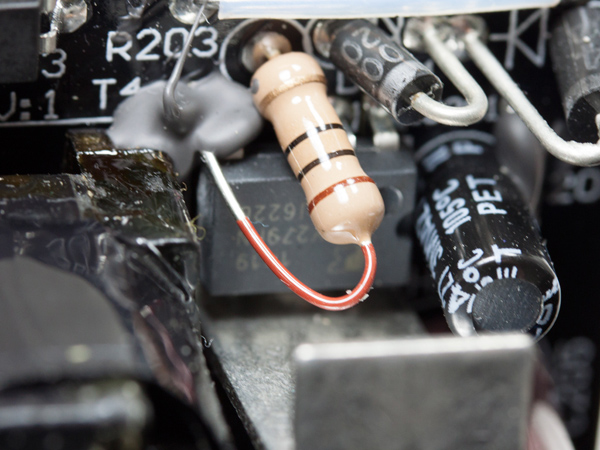



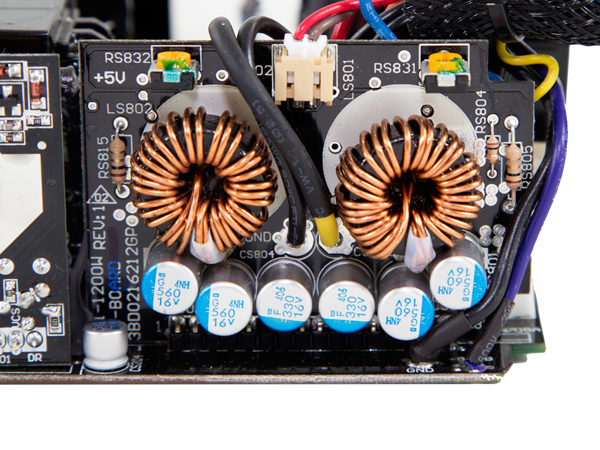
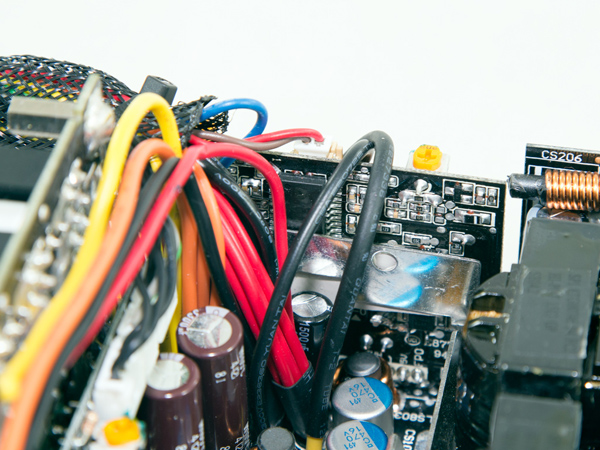

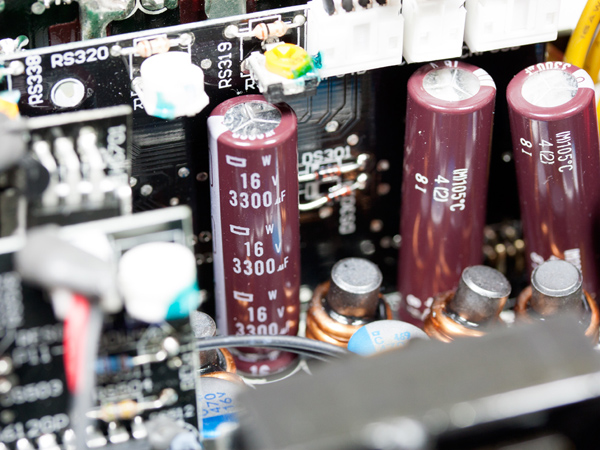
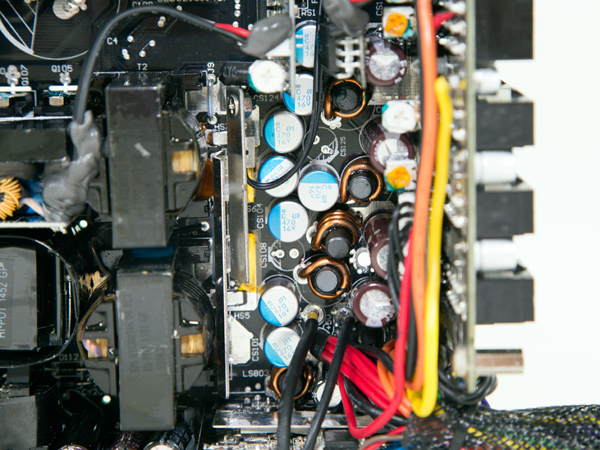
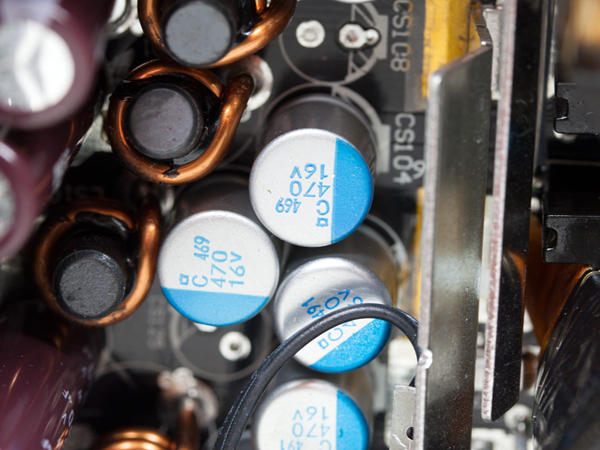
On the secondary side, four FETs regulate the +12V rail, which are fed to two DC-DC converters to generate the minor rails. All +12V FETs are located on the solder side of the main PCB, while the DC-DC converters are installed on a small daughter board, located right next to the modular PCB. The common PWM controller of both VRMs is an Anpec APW7159. All filtering capacitors on the secondary side are of high quality, and Nippon Chemi-Con provides the electrolytics. We also found some electrolytic Rubycons on the main PCB. Finally, all polymers come from Chemi-Con, while all electrolytics are rated at 105 °C, something we expect on a high-end PSU like this one.
Get Tom's Hardware's best news and in-depth reviews, straight to your inbox.
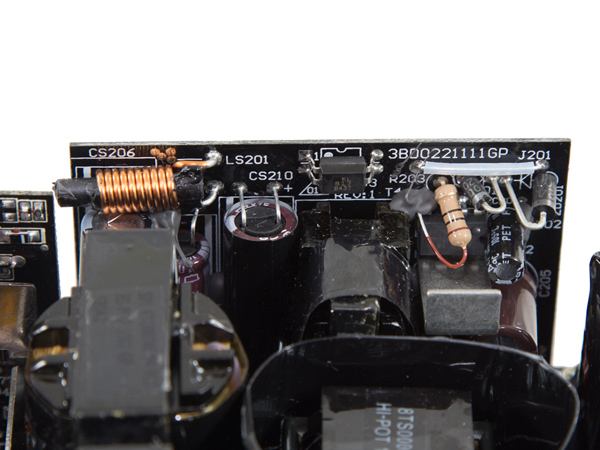
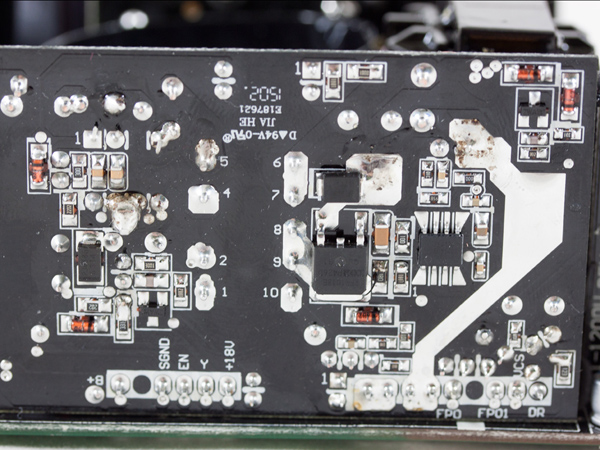


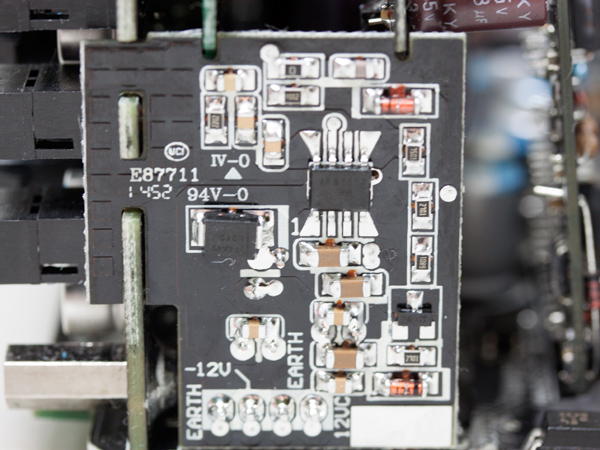


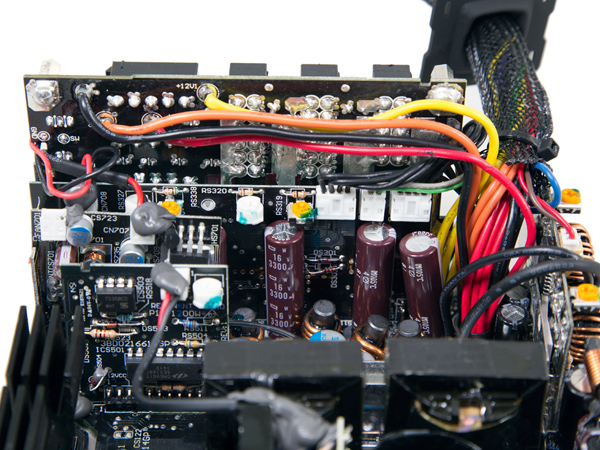
The 5VSB regulation circuit is located on a separate daughter board, upon which we identified an International Rectifier RFR1018E MOSFET and a Power Integrations TNY279PN standby PWM controller. There is also a dedicated circuit, housed on a daughter board as well, for generating the -12V rail.
Many polymer caps from Chemi-Con filter the rails on the front of the modular PCB. We were a bit disappointed by the soldering quality on the modular board. We expected FSP to do a much better job, especially in a flagship unit.
Soldering quality on the main PCB is good overall, but there are some spots with sloppy solder joints. Unfortunately, the business side of the board had several wires loose, and generally the whole design isn't very clean. Some components aren't properly aligned into place, showing that the production line isn't mature enough yet.
The PSU can control up to four external fans. This is accomplished with a separate sensor so that they are electrically independent from the unit's internal fan. The control circuit, shown above, applies a short start-up impulse, allowing even fans with high start-up voltages to work without any problems.
The cooling fan is by be quiet! and belongs to the SilentWings 3 family. Its model number is SIW3-13525-HF (135mm, 12V, 0.56A, 70.12 CFM, 1500 RPM), and it's a high-quality fan that will last a long time thanks to its fluid dynamic bearing. It's quiet, too, the result of the relaxed fan profile.
Current page: A Look Inside And Component Analysis
Prev Page Packaging, Contents, Exterior And Cabling Next Page Load Regulation, Hold-Up Time And Inrush Current
Aris Mpitziopoulos is a contributing editor at Tom's Hardware, covering PSUs.
-
Xivilain For lower wattage units, I'd be interested in seeing fanless designs. But it doesn't seem like BeQuiet! is targeting that market, which is sad, because there are lots of HTPC builders out there demanding silence in their living rooms. Anyawy, great review!Reply -
Aris_Mp fanless designs target a very specific market segment mostly because of their increased cost. From the moment you can have inaudible operation at light-mid loads with a proper designed, normal PSU I would highly prefer it especially since it can deliver more power when needed (but with the fan spinning at high enough speeds), than a passive one which will be restricted at 550 - 600 W tops.Reply -
Shankovich ReplyFor lower wattage units, I'd be interested in seeing fanless designs. But it doesn't seem like BeQuiet! is targeting that market, which is sad, because there are lots of HTPC builders out there demanding silence in their living rooms. Anyawy, great review!
I don't see why you cannot have a lower powered unit at 80PG and have the fan run at a low speed. I got a HX750i because I need to give a FirePro W9100 very stable power, but the principle is the same: fan turns on at some higher wattage usage (for me it's 300, but for 80PG I'd say 200 is safer). Even when the fan turns on, can't hear it at all (it has a test button).
If someone makes a 600W PSU that has this kind of fan profile, that would be a score. It won't technically be fanless quite, but the fans won't even get past 15dB for average user power usage, and around 20dB at max settings. Why all this? Will lower the price since a lower efficiency can be used. -
Giannis Karagiannis Since you can have the fan spinning at very low rpm or not at all during light and normal use I can't see a point in having a fanless PSU. During heavy loads, when you need more than 300 watts of power, I believe the noise from the PSU fan would the last thing that would be annoying you.The heat produced be the rest of the system components would be so much that you would need active cooling anywayReply
Another very comprehensive review. Keep up the good work! I would also like to see more reviews for power supplies in the sub-100$ price range. -
dudmont "The prices of the 850, 1000 and 1200W units in the U.S. are $200, $240 and $280, respectively." Yikes!Reply
I'm not convinced that a quieter PSU is where it's at. It's cooling fans that create the big noise, not the PSU and it's fan.
-
Aris_Mp be quiet! informed me that this design/platform was actually designed by one of their engineers and not by FSP, which only helped them build it through their production facilities (since be quiet! doesn't have a PSU manufacturing line).Reply
So in other words be quiet! didn't just bought this platform from FSP but they designed it on their own and FSP just produced it for them.
Until now I wasn't aware of it but now that I am, I wanted to make things right and provide the proper credit to be quiet's engineer that designed this platform (whose name is unknown to me).
